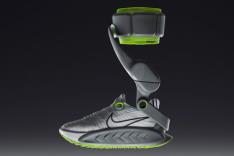Myth 7: Runners Don't Need to Strength Train
Multiple studies have proven that strength training is effective and beneficial for runners. Strength training improves running performance and can reduce the risk of injury (see myth eight). An effective routine doesn't have to take a lot of time; 15 to 30 minutes a couple of times a week will make you a stronger, more well-rounded athlete. Focus primarily on your legs and core. Do unilateral movements and exercises that focus on balance and stability, such as single-leg exercises, BOSU and stability ball training. Change your routine every couple of weeks to avoid hitting a training plateaus.
More: 10 Exercises to Build Strength
Myth 8: Flexibility is King
With the increased popularity of yoga, many runners think they need to be as flexible as Gumby to run their best. The truth is, overly flexible joints are less stable, which makes them more prone to being overstretched. Your body needs stable joints with strong muscles surrounding them to keep everything in place. Therefore, stability is more important than flexibility. You can increase your stability through strength training and balance drills (see myth seven).
More: 5 Core Exercises That Increase Stability and Running Efficiency
Myth 9: Running in Cold Weather is Unhealthy
This myth has been around a long time. Viruses and bacteria make you sick, running in the cold does not. You're more likely to catch a cold if you stay inside because that's where germs can thrive and spread. Instead, dress appropriately for the weather (layers are best) and be sure to keep your head and your hands warm.
More: 4 Cold-Weather Running Tips for Beginners
Myth 10: Barefoot Running ia Best
Christopher McDougall's book Born to Run helped to spark the barefoot/minimalist running craze. While barefoot running can help certain individuals, it's not the end all be all answer to your running prayers. If you want to give minimalist shoes a try, you need to do so gradually. Try walking in the shoes first to get used to them. Then try wearing them on your short runs. Build your mileage slowly to minimize potential injuries that can occur if you make the switch before you're ready (most notably calf strain and Achilles tendinitis).
More: Is Barefoot Running the "Perfect Running Shoe"?
 Sign up for your next race.
Sign up for your next race. - 3
- of
- 3
About the Author

Get ACTIVE on the Go


Couch to 5K®
The best way to get new runners off the couch and across the finish line of their first 5K.
Available for iOS | Android







Discuss This Article